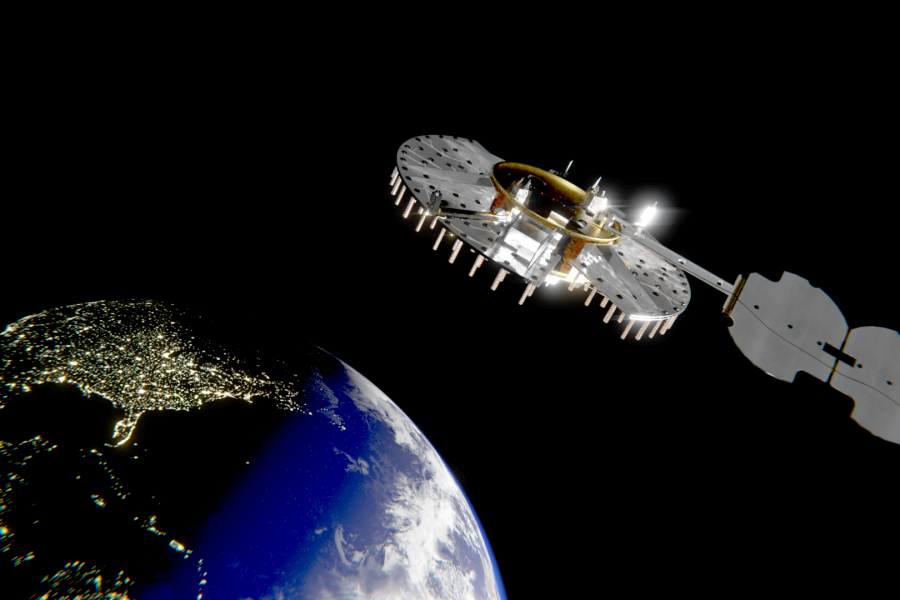A promising experimental Air Force satellite is one step closer to being ready to launch.
The Air Force Research Laboratory on July 30 said the service’s Navigation Technology Satellite-3 passed a critical design milestone in June that lets the contractor, L3Harris Technologies, start to build and test the system. It is on track to launch in 2022.
NTS-3 is designed to improve on the directions and timing, now provided by GPS, that power everything from mapping apps to ATMs. It also offers the U.S. a backup option in case GPS satellites become targets in a future conflict.
“AFRL will operate NTS-3 in geosynchronous orbit for a year,” the Air Force said. “The spacecraft will broadcast experimental [positioning, navigation, and timing] signals that will test new architectures designed to increase resilience to signal interference and responsiveness to warfighter needs.”
NTS-3 is the latest in a series of navigation satellites that began in the Navy in the 1960s and later transferred to the Air Force. Those systems became Navstar, the early GPS program. This is the first experimental satellite for positioning, navigation, and timing in more than 40 years, according to the Air Force.
If the venture works, the new satellites would always hover over the same spots on the ground, providing more consistent navigational information. GPS satellites sit in a higher orbit and face their respective areas on Earth only twice a day. NTS-3 is also designed to withstand attacks like signal jamming, and should be able to interpret information sent from European and Japanese navigational systems.
Testing will verify whether the satellites can keep working if they lose contact with the ground, if they remain accurate even while repositioning in orbit, and if the technology can detect and fix its own timing and signal issues.
L3Harris, then Harris Corp., received an $84 million contract to work on NTS-3 in 2018. That company builds the navigational payload and attaches it to a spacecraft designed by Northrop Grumman. Colorado-based Braxton Technologies also earned $9.5 million in 2017 to create the ground controls.
L3Harris “cleared the first development hurdle in half the time similar satellite programs take,” and is “combining experimental antennas, flexible and secure signals, increased automation, and use of commercial command-and-control assets,” the company said in a July 31 release.
NTS-3 is one of three high-profile Air Force research programs known as “Vanguards.” The military sees those initiatives as potential game-changers and is devoting resources from across the Department of the Air Force to get them done quickly.
The Air Force Research Laboratory is working with the Space Force, the Space and Missile Systems Center, and the Air Force Life Cycle Management Center to smooth the transition from development into a broader purchase and real-life operations.
L3Harris is on contract to build up to nine NTS-3 satellites, SpaceNews reported last year. The technologies it develops can also be added to Lockheed Martin’s newest version of GPS, known as the GPS III Follow-On program.
“Ultimately, NTS-3 will provide users with enhanced signal stability, availability, integrity, and accuracy,” AFRL said.

